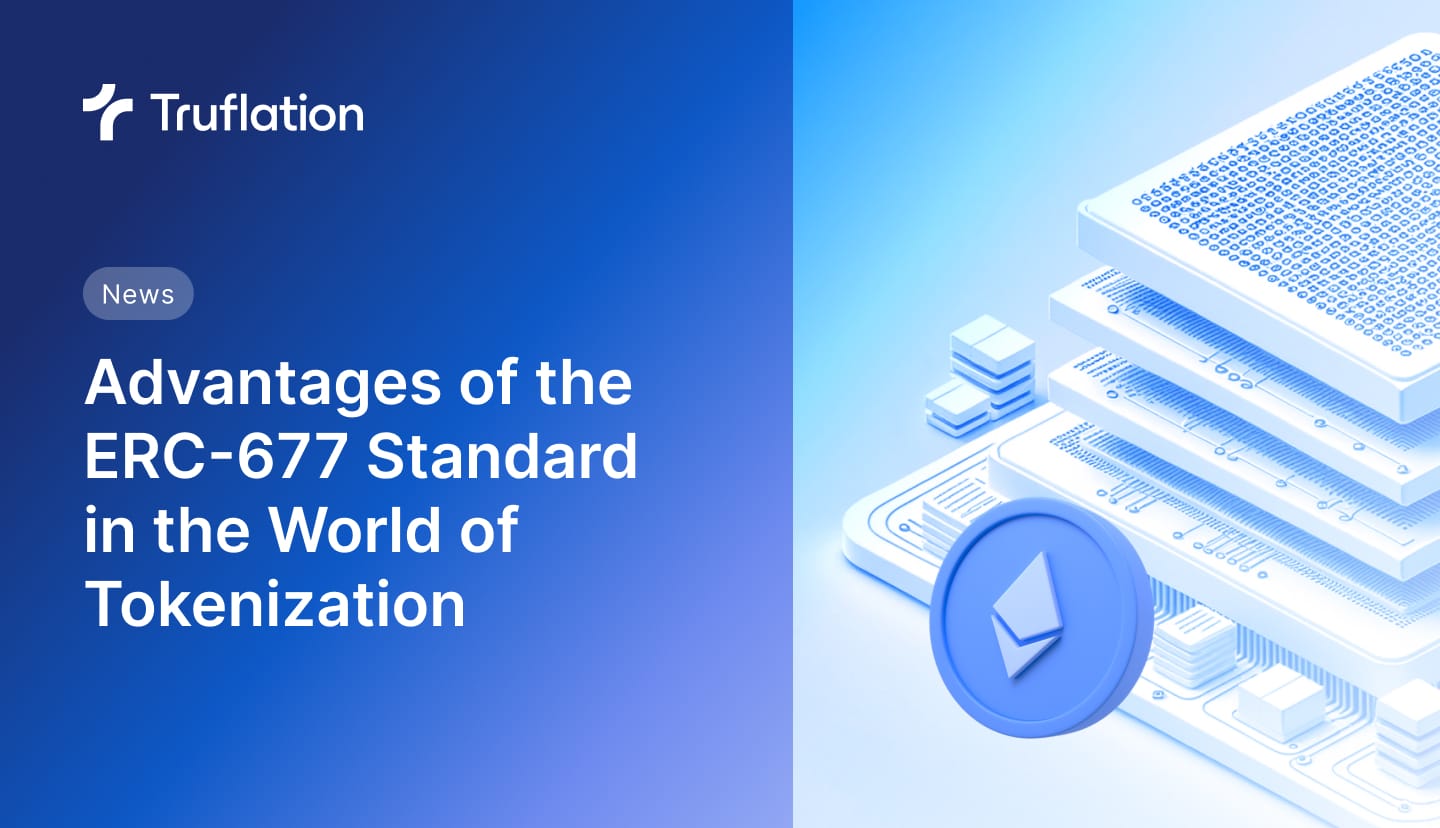
Advantages of the ERC-677 Standard in the World of Tokenization
Published 11 Jan, 2024
As the blockchain and cryptocurrency ecosystem continues to evolve, the need for standards that enhance interoperability, security, and efficiency becomes paramount. In this context, the ERC-677 standard has emerged as a significant player, offering numerous advantages over its predecessors. ERC-677, an extension of the widely adopted ERC-20 standard, brings forth a range of features that make it an appealing choice for developers and businesses involved in tokenization.
Seamless Token Transfers
One of the key advantages of ERC-677 is its ability to facilitate seamless token transfers. Unlike its predecessor ERC-20, ERC-677 enables token transfers with additional data, opening up new possibilities for more complex and sophisticated transactions. This feature proves invaluable in applications such as decentralized exchanges, where additional information can be crucial for executing smart contract functions alongside the transfer.
Enhanced Interoperability
Interoperability is a crucial aspect of blockchain technology, and ERC-677 excels in this regard. Its design allows for interaction with other smart contracts within the same transaction, leading to improved compatibility with a wide range of decentralized applications (DApps). This enhanced interoperability fosters a more connected and collaborative blockchain ecosystem, reducing silos and promoting a unified approach to decentralized finance (DeFi) and tokenization.
Cost-Efficient Contract Calls
With ERC-677, contract calls become more cost-efficient. By enabling tokens to be transferred alongside data in a single transaction, the need for multiple transactions to execute complex operations is minimized. This not only reduces transaction costs but also enhances the overall efficiency of the blockchain network, making it more attractive for developers and businesses seeking cost-effective solutions.
Preventing Token Loss
One of the notable challenges faced in tokenization is the risk of token loss during transfers. ERC-677 addresses this concern by allowing tokens to be sent to contracts that may not necessarily recognize the token contract interface. In ERC-20, tokens sent to contracts that do not support the standard are typically lost, leading to a potential decrease in the token supply. ERC-677 mitigates this risk, making token transfers safer and more user-friendly.
Improved Smart Contract Functionality
ERC-677 expands the functionality of smart contracts by enabling them to receive tokens and process related information in a single transaction. This opens up new possibilities for decentralized applications, especially in the context of complex financial instruments, gaming platforms, and other use cases that require sophisticated smart contract functionality. As a result, developers have more flexibility to create innovative and feature-rich applications on the blockchain.
Backward Compatibility
The ERC-677 standard maintains backward compatibility with ERC-20, making it easier for projects that have already adopted ERC-20 to transition seamlessly. This compatibility ensures a smooth migration process for existing tokens and allows developers to leverage the advantages of ERC-677 without major disruptions to their current infrastructure.
The ERC-677 standard brings a host of advantages to the world of tokenization, ranging from seamless token transfers and enhanced interoperability to cost-efficient contract calls and improved smart contract functionality. Its ability to prevent token loss and maintain backward compatibility further solidify its position as a promising standard for blockchain developers and businesses. As the cryptocurrency landscape continues to evolve, ERC-677 stands out as a key player in shaping the future of decentralized finance and tokenized ecosystems. As more projects recognize the benefits it offers, ERC-677 is likely to play a crucial role in driving innovation and efficiency in the blockchain space.
Get Exclusive Insights
with our Weekly Newsletter